The King of Richmond Street
MEDEIROS
King Richie’s, the pizza shop located on the corner of Richmond and Broughdale, was not always the rite-of-passage late-night food stop for students that it now is.
Afshine Jahangiri, founder of King Richie’s, admits the joint started with “horrible tasting food” — so much so that he considered selling the store within its first year.
He bought the shop’s current location — which used to be a burger joint — in April 2012 and began renovations immediately. Jahangiri recalls this tough time, going back and forth with city bylaws and equipment deliveries. The business was not able to open its doors until five months later, during the second week of the school year.

Sales were mediocre at best and he was scraping by with only “pocket money,” budgeting to invest most of his cash back into

the business. Faced with the decision to sell or keep plotting on, Jahangiri decided King Richie’s needed to perfect the basics — starting with the dough.
The shop tested over 50 dough recipes, giving samples to family and friends for feedback. They did the same thing with the sauce and ended up with a new and improved base for their pizzas. The word spread across Western campus about the new pizza. Jahangiri noticed the increase in students who heard about the cheap pizza parlour a walking distance away, open into the early hours of the morning — 3 a.m. on weeknights and 4 a.m. on weekends.
“I got to know a lot of students by name. A couple of them I became friends with, especially the first-years,” says Jahangiri. “They became sophs and brought all their frosh the year after [so] we started getting really busy.”
When he first purchased the location 10 years ago, Jahangiri says he remembers
driving along Richmond Street, trying to brainstorm a name for the restaurant. Maybe “Richie's Pizza,” he thought before seeing a “Richie’s Breakfast” only a few minutes up the road. He was determined to find something more catchy and original.
From the very beginning, Jahangiri believed they would be the most successful business on the street. “‘He can be Richie, but I’m the king of Richmond,’” Jahangiri said to himself that day, cementing the name “King Richie’s.”
No matter how many pizzas the shop sold in those first years of success, gaining the trust from their customer base — which became largely students — was always the most important thing to Jahangiri. The regulars got to know Jahangiri well enough to know him by the nickname “Ash.”
since 1906
What’s next for Western’s mask mandate?


 VERONICA MACLEAN NEWS INTERN SONIA PERSAUD NEWS EDITOR
VERONICA MACLEAN NEWS INTERN SONIA PERSAUD NEWS EDITOR

Western president Alan Shepard has said that the university is looking to release a statement about the future of mask mandates on campus sometime in late November or early December.
Shepard’s statement comes one week after Western University's announcement on Oct. 17 that the current classroom mask mandate will continue until at least the end of the fall term. Western is the only major university in Ontario requiring masking in instructional spaces.
“Our intention with the masking policy just here was to make classroom spaces safe, not only for everybody, but also particularly for people who are immunocompromised, whether it be a student or a prof or a sta member,” said Shepard.

The university previously announced on Aug. 22 that masks would be required in instructional settings where physical distancing is not possible, and on Sept. 6, committed to reviewing its policy after Thanksgiving weekend.

The university’s masking policy has seen both backlash and support from the Western community. In August, a protest against the mask and booster mandates saw over 400 attendees, although the University of Western Ontario Faculty Association has expressed support for the policy.

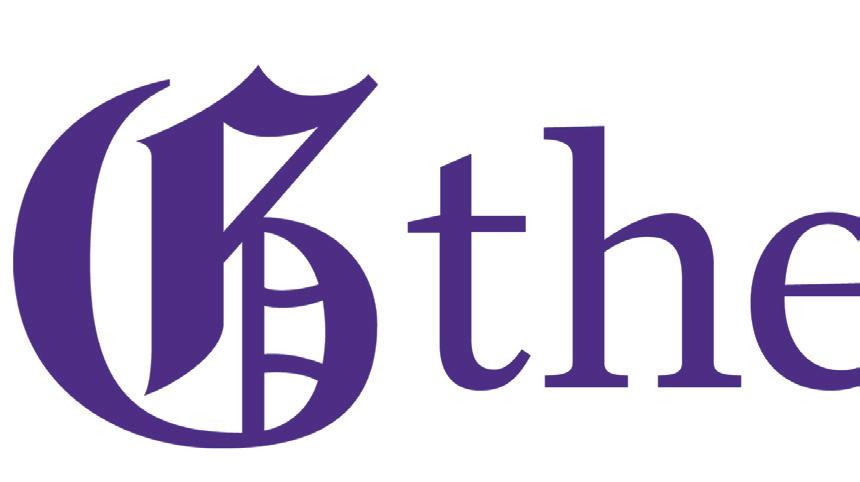
While masking is still required in classrooms, the mandate has not been strictly enforced, with students not social distancing, wearing masks improperly or not wearing masks at all in classrooms.
“A lot of students, I see them not wearing masks in the classroom,” said Aya Al Darwish, a first-year engineering student. Al Darwish added that, in some classes, professors “don’t care” whether students wear a mask or not.
Alexandra Dassios, a second-year kinesiology student, said professors in two of her five classes remind students to wear masks, but the rest don’t. Even in the classes where her profs do tell students to mask, Dassios said many of her classmates don’t.
“I find when the teachers mention it, it’s probably more than 50 per cent who wear it, but the classes where the profs don’t bother, not many do,” said Dassios. “In my physiology class, they have masks at the front and they’ll mention it, but there will still be a couple of people that don’t.”
OCTOBER 27, 2022 VOLUME 116 ISSUE 3
NEWS P3 CULTURE
Why am I interested in serial killer stories… and is that okay? Faculty oppose SRA replacement policy at Senate debate
CONTINUED ON P5 P6 Head-to-Head: Are breadth requirements good
for
students? P8 SPORTS Students petition to move first-year physics exam for World Cup final P11 OPINION LAUREN
CULTURE EDITOR
CONTINUED ON P6
SOPHIE BOUQUILLON GAZETTE Managers Salah Iraqi (left) and Fesih Ahmi (right) stand outside of King Richie's pizza shop, Oct. 24, 2022.
VOLUME 116 , ISSU E 3
OCTOBER 27 , 2022
University Community Centre Rm. 263
Western University London, ON, CANADA N6A 3K7


Editorial editor@westerngazette.ca






EDITOR-IN-CHIEF HOPE MAHOOD
DEPUTY EDITOR ALEX MCCOMB
MANAGING EDITOR SARAH WALLACE
COORDINATING EDITOR (VIDEO AND FEATURES) LUCAS ARENDER
COORDINATING EDITOR (CULTURE AND SPORTS) BIANCA COLLIA
ART DIRECTOR CASSANDRA KACZMARSKI
NEWS ANDY YANG
ESTELLA REN ADSHAYAH SATHIASEELAN SONIA PERSAUD
CULTURE LAUREN MEDEIROS
CAT TANG DANIELLE PAUL
SPORTS MILES BOLTON KIERAN DROVER RYAN GOODISON
OPINIONS JORDAN BLOOM HANNAH ALPER COPY ELIZABETH HART SCOTT YUN HO
GRAPHICS REBECCA STREEF KAT HERINE G UO ERIN GRACE
PHOTO SOPHIE BOUQUILLON
VIDEO REBECCA BARTKIW MADELEINE MCCOLL ROMANO WATT MINA AHMAD
SOCIAL MEDIA ELIZABETH HART PE’ER KRUT
Students in residence say COVID-19 protocols unclear
TIANA O’CONNOR CONTRIBUTOR
Students in residence say they are unclear on COVID-19 protocols, including how to respond if they test positive.
Sofia Tomassini, a first-year medical sciences student living in Delaware Hall, said students in her residence are “always sick,” but she rarely sees anyone self-isolate.
“[Students in residence] just treat COVID as a regular flu or cold, and if one person on the floor is sick, by the end of the week, the whole floor ends up getting similar symptoms,” said Tomassini.
Tara Shahzadeh, a first-year health sciences student living in Medway-Sydenham Hall, echoed Tomassini, saying “everyone is sick one way or another.”
Cici Ma, a first-year management and organizational studies student living in Saugeen-Maitland Hall, said when her roommate tested positive for COVID-19, Western didn’t provide much guidance. According to Ma, her roommate was only told to self-quarantine and Ma wasn’t told anything following the positive test.
Chris Lengyell, director of Western’s Housing and Ancillary Services, said a COVID-19 isolation guide with information about meals, roommates, washrooms and supports was shared with students in an all-residents emailed newsletter on Sept. 13.
Multiple students said they did not recall receiving the email. Instead, students like Shahzadeh said they only remember receiving the standard daily COVID-19 self-assessment and absence notification email.
After a quick search, Shahzadeh realized she had received the newsletter with the isolation guide from Western Housing on Sept. 13, but said she had not seen it initially and was not reminded.
The isolation guide was found below information about a “Residence Pool Party” and to “Join Residents’ Council.”
The isolation guide states, “if you receive a positive test result or become symptomatic, you must isolate until fever-free for 24 hours and symptoms are significantly improved for 24 hours (48 hours for gastro-intestinal symptoms). Afterwards, you are to wear a mask in all settings outside of your room for a full 10 days from the start date of symptoms.”
The isolation guide states that “failure to abide by health and safety protocols may result in conduct sanctions … up to and including immediate removal from residence.”
The isolation guide indicates that living with someone who has symptoms or tested positive for COVID-19 doesn’t require students to self-isolate if they are over 18 years old and have received a COVID-19 booster dose — those under 18 only
need to be fully vaccinated — or have previously tested positive in the last 90 days and do not have symptoms.
“I was sick and I tested negative, but if I tested positive, I don’t know what I would have done,” said Amy Sagoo, a first-year student living in Saugeen-Maitland Hall.

The isolation guide also said students who are sick must wear a medical-grade mask and practice social distancing when attending a shared washroom.
Those with viral symptoms, such as a fever or cough, can order residence-provided to-go meals through the myHousing Portal, and “meals will be available for pick-up in a designated location” as long as students wear the required medical-grade mask.
Tomassini said she didn’t know students could order food through the portal, and has only heard of her peers ordering through third-party food delivery apps like UberEats. She was also unaware medical-grade masks were required in communal spaces for those who were sick, including in shared bathrooms.
“For the past month of living on campus, I have not been wearing a mask nor have I seen other students in my residence wearing masks,” said Tomassini.
Lengyell said, in a statement to the Gazette, “residence sta have been trained to use both the health & safety protocols page and the isolation guide as reference points to navigate conversations and support for students.”
According to Lengyell, training and protocols in response to COVID-19 “were developed in collaboration with public health and medical experts on campus and are aligned with provincial expectations.”
Western med student first non-binary, trans person to receive Canadian Medical Hall of Fame Award
infrastructure just isn’t there,” said Raner.
SOPHIA SCHIEFLER NEWS INTERN
Gavin Raner, a third-year medical student at Western Schulich School of Medicine and Dentistry, became the first transgender and nonbinary-identifying person to receive the Canadian Medical Hall of Fame Award this past August.
Raner is also the first non-binary person to be registered with the Ontario Medical Association.
Raner was one of 13 medical students across Canada honoured with the award. Recipients receive a $5,000 cash prize and a complimentary ticket and travel subsidy to attend the Canadian Medical Hall of Fame Induction Ceremony in Halifax, N.S..
Raner said receiving the award “was a pretty magical moment.”
“I had to reread [the email] like 80 times because I just could not believe it,” they said.


Raner’s research concerns improving the accessibility of gender-a rming surgeries and improving the standard of LGBTQ2+ health education. They are currently working on a project to remove obstacles faced by individuals looking to get top surgery.
Raner became interested in medicine when they were in high school. They gained interest in improving the standard of LGBTQ2+ health care as they began to understand the challenges faced by LGBTQ2+ individuals.
“We can’t get the care that we want because the
As someone who identifies as transmasculine non-binary, Raner said they faced personal challenges within the medical system. In the summer of 2020, when they were entering medical school, the OMA did not allow them to register as a non-binary person — only providing them with the options of male or female. Raner sent in a letter, and the OMA made changes to their system, allowing them to use their preferred gender identity.
As one of only a few openly non-binary individuals in the medical field, Raner says they face further challenges than just systemic ones.
“There are no role models for me to look up to,” said Raner. “Specifically, a surgeon who is openly trans or non-binary who is in London, Ont., there’s absolutely nothing like that. Which is why it’s been so di cult navigating medical school as a trans person because it really feels like it has not really been done before.”
At Schulich, Raner was elected to Schulich Medicine’s Student Council as an equity, diversity, inclusion and decolonization representative, and soon after as a co-vice president of equity, diversity, inclusion and decolonization. Throughout their time with the council, Raner has worked side-by-side with the doctor in charge of designing the LGBTQ2+ health module for first-year students.
The SMSC also recently submitted their student-led curriculum report to the faculty. Students from every year within the program conducted this review.
“We comb through the curriculum and put
together the areas that we found problematic or that were lacking and a lot of that had to do with trans healthcare,” explained Raner.
Raner hopes to see more administrative changes at Western University to better accommodate students who are looking for help with transitioning or who are transitioning.
“The transgender clinic at student services is avaliable for anyone who’s at Western to get help there, but in my personal experience, they’re extremely unplanned,” they explained.
Raner said they had di culty “finding continuity” in trans healthcare at Western, since doctors are di erent year-over-year. They hope to see improved training for doctors working at the university as well.
“It is not too much to ask that every doctor working with students be at least somewhat educated in trans healthcare,” they said.
Terry McQuaid, director of wellness and well-being, said in a statement Western's health providers, including physicians, social workers, nurses and administrators “have completed professional development in trans and non-binary care.”
She added the school has hired “new providers who have recently joined the team with specific experience in the provision of trans-a rming care.”
Raner hopes to continue their work improving the standard of trans healthcare. They are especially hoping to push for more extensive health insurance for transgender patients within Ontario, as well as improving the training available to doctors interested in performing gender a rmation surgeries.
All articles, letters, photographs, graphics, illustrations and cartoons published in the Gazette, both in the newspaper and online versions, are the property of the Gazette. By submitting any such material to the Gazette for publication, you grant to the Gazette a non-exclusive, world-wide, royalty-free, irrevocable license to publish such material in perpetuity in any media, including but not limited to, the Gazette’s hard copy and online archives. @UWOGAZETTE @WESTERNGAZETTE / WESTERNGAZETTE /UWOGAZETTE / WESTERNGAZETTE Send us an email at managing@westerngazette.ca THIS COULD BE YOU! Western University’s o cial student newspaper since 1906 WESTERNGAZETTE.CA @UWOGAZETTE EDITORIAL SUPPORT MANAGER DAN BROWN GAZETTE CON TRIB UTORS MAREK BROOKING EMILY CAO JESSICA COUNTI DAISY GAMBLE JESSICA KIM ANGELA KRSTIC KATHERINE LUO VERONICA MACLEAN SERGIO MURILLO TIANA O'CONNOR SOPHIA SCHIEFLER CAMILLE SEYRAT GREG WEI JI YOU NEWS | P2
YIFEI ZHANG GAZETTE Essex hall residence, Mar. 4, 2021.
UWOFA takes next steps toward possible strike
ANDY YANG NEWS EDITOR
The University of Western Ontario Faculty Association requested the provincially-appointed conciliator file a “No Board” report with the Ministry of Labour last Thursday.
UWOFA can legally strike 17 days after the Minister of Labour, Training and Skills Development releases the no-board notice to Western University and the union.
If a collective bargaining agreement is not reached by then, Western’s 1,800 faculty members could walk out of their classrooms and strike.
In the event of a strike, almost all classes, lectures, labs, tutorials, seminars, fieldwork, tests, quizzes and exams would be cancelled. Professors would not come to campus or respond to emails. Residences and most campus services, including athletics, would likely remain open. The London Transit Commission would reroute buses away from campus in order to not cross the picket lines at university entrances.
“While the filing of a No Board Report is the final mechanism in making a strike or a lockout possible, this does not mean that negotiations are at an impasse,” UWOFA wrote in a statement. “The Negotiating team will continue to work at the table for a fair and equitable agreement for all Members.”
At the time of publication, UWOFA could not confirm the requested report’s status. Two bargaining meetings are scheduled to continue this week, with nine more meetings planned for the coming weeks.
Western said, in a statement to the Gazette, the report request "is a normal step in the collective bargaining process."

"The University is optimistic that an agreement, that meets the requirements of the Ontario's Bill 124, Protecting a Sustainable Public Sector for Future Generations Act, 2019, can be negotiated and a strike can be avoided," Western's statement read.
Ninety-one per cent of faculty union members voted in favour of a strike after UWOFA called for a strike vote on Sept. 20. UWOFA said the decision
was made “to help strengthen our bargaining position.”
At the time of publication, UWOFA said Western has rejected 27 of the union’s 55 proposals. UWOFA is not bargaining for increased wages due to restrictions under Bill 124 or stricter COVID-19 mandates.
Both Western president Alan Shepard and UWOFA president Hiran Perinpanayagam hope “that there will not be a strike.”
“I think it would be very di cult for Western students …, faculty members and it would be di cult for the university,” said Shepard. “We hope for a good outcome for them.”
UWOFA and Western began this round of negotiations on April 7 when the union gave the university o cial notice to bargain. Both sides have hired a conciliator to help with the process. At the moment, the previous agreement’s provisions are in place until a new collective agreement has been reached.
Despite bargaining issues in the past, Western’s faculty have never gone on strike before, according to UWOFA. Four years ago, Western faculty almost went on strike when their last negotiations with the university stalled. UWOFA called for the strike to start Nov. 9, 2018 but reached a deal with the university at 2 a.m. that morning.
Wilfrid Laurier University is also currently negotiating their collective bargaining agreement with the Wilfrid Laurier University Faculty Association. Over 95 per cent of WLUFA members voted in favour of going on strike if necessary. Dalhousie University teaching assistants went on strike on Oct. 19 after negotiations stalled over pay raise.
A series of strikes have occurred at Canadian universities this year as rising inflation and provincial wage mandates complicate negotiations. The University of Lethbridge had a 40-day long strike in the spring. Acadia University had a one monthlong strike in February. Ontario Tech University and Concordia University of Edmonton also had 10- and 12-day strikes respectively earlier this year.
Saugeen vandalized with ‘discriminatory symbols’
JESSICA KIM NEWS INTERN
Saugeen was vandalized with “discriminatory symbols” on Friday, Oct. 7, according to an email sent to residents.
Western Housing and the Western Special Constable Service responded to Saugeen-Maitland Hall after “individuals covering their faces” were reported vandalizing hallway walls. The university also discovered a poster in the residence with a discriminatory symbol drawn on it at that time.
Housing does not know if the two incidents are connected, according to Western University’s associate vice-president of housing and ancillary services, Chris Alleyne.
The Gazette could not confirm what discriminatory symbols were displayed.
Brent Rohrer, the residence conduct coordinator for Saugeen, Bayfield Hall and Lambton Hall residences, emailed Saugeen residents on Tuesday regarding the incident.
“The behaviour involved individuals covering their faces and proceeding to damage and vandalize a residence community, which included discriminatory symbols,” said Rohrer in his email.
He encouraged students to come forward with any information to aid in an ongoing investigation.
Several students living in Saugeen told the Gazette they did not receive the email, but no patterns were identified regarding recipients.
“It's kind of sad that in the society we're in that people decide to do that kind of stu ,” said Saugeen resident and first-year criminology student Elle Ventresca. “Especially at Western, we have so many di erent cultures and people.”
Lanaay Hinds, a first-year gender studies student living in Saugeen, said her initial reaction was “shock.” She said her friends had a similar reaction to the vandalism.
“My friends and I are an ethnic group, so we're kind of already uncomfortable as it is — and then
now we're kind of on guard even more,” Hinds said. None of the students the Gazette spoke to had heard anything about the incident before the Tuesday email.
The incident comes just two weeks after a Western Law professor used the N-word in class and was condemned by the Black Law Students’ Association.
Alleyne said Western has “no tolerance for racism or discrimination” on campus and is continuing to investigate the situation.
— with files from Sonia Persaud
Faculty oppose SRA replacement policy at Senate debate
 SONIA PERSAUD NEWS EDITOR
SONIA PERSAUD NEWS EDITOR
Western faculty members opposed a draft policy that would allow students to declare absences without documentation, while Western’s president Alan Shepard says it is “probably” important to have.
The draft policy outlines two “routes” for students seeking academic accommodation — declared absences with documentation and without documentation. The second route — a declared absence without documentation — is similar to Western University’s self-reported absence policy, which was axed last spring following its three-year pilot.
The DAWD would allow students to declare one undocumented absence per course, for assessments of any weight, although professors could make one assessment per course ineligible for a DAWD to be used.
Faculty of Arts and Humanities dean Michael Milde introduced the draft of the Policy on Academic Consideration for Student Absences at Western’s Senate meeting on Oct. 14.
“[The DAWD] has elicited quite a visceral response as reemergence of the SRA in a new format,” said Hiran Perinpanayagam, president of the University of Western Ontario Faculty Association.









Nigmendra Narain, a political science lecturer and former UWOFA president, said faculty members felt forced by SRAs to eliminate smaller assignments — since the SRA could only be used on assignments worth less than 30 per cent — despite knowing assignments worth 31 per cent or more create “significantly greater” stress for students.
But Western’s president, Alan Shepard said in an Oct. 24 interview that a DAWD system is “probably” important to have.
“I'm not a fan of every time you have the flu, you have to go to Student Health and get a note,” said Shepard. “The question is how to make a system that's fair, that doesn't get misused, that leaves students feeling like they've been heard and respected, and also the faculty feeling like they've been treated with respect.”
Joanna Langille, a professor in the Faculty of Law, called the SRA program a “failed” experiment. She suggested the university consider devoting more e ort to the absence with documentation policy — potentially including a dedicated physician for students seeking medical accommodation.
Many professors at the meeting said students used SRAs for “workload management,” instead of using them for legitimate medical or compassionate purposes — which they fear will happen with DAWDs as well.
“What you've done here is you've clearly disarticulated medical and compassionate leave from the DAWDs,” said Jane Toswell, an English and writing studies professor. “And the DAWDs are then a workload management tool.”
“You're now innovating a new process that has never gone on at Canadian universities, and I think there's a serious academic reputation issue,” she added.



Biology professor Ben Rubin said his department tracked SRA use pre-COVID and found that, in the first year, the number of documented absences remained stable, with SRAs on top of these.
But Faculty of Engineering dean, Ken Coley, argued in favour of DAWDs, saying workload man-
agement has “existed in our system” before and that professors’ assessment deadlines have “become significantly unreasonable.”
Student senators remained relatively quiet on the issue, with none speaking until Milde remarked on a “noticeable absence” of student commentary.
Student senator-at-large Kathleena Henricus said she doesn’t think there should be a “conflation” of students being irresponsible or unprofessional with seeking accommodations.
Henricus also shared her own personal experience using an SRA, saying she was unable to provide documentation for an absence under compassionate grounds as an example of the benefit of the program to students.
Perinpanayagam said faculty are “unanimous”
in their dissent towards DAWDs, although he praised the addition of compassionate grounds to the policy to declare absences with documentation. Western currently has no formal system for students to request academic consideration for non-medical reasons.
When asked about why Western has no such policy currently in place, Shepard said he thinks there is “a longstanding practice of compassion” in place at universities, where “people just worked it out individually” with understanding professors rather than needing a specific policy to consult.
The Senate Committee on Academic Policy, which created the draft policy, will take the Senate discussion into consideration for future revisions before the Senate ultimately votes on the matter.
NEWS | P3
SONIA PERSAUD GAZETTE Western Senate meeting, Oct. 14, 2022.
Out with the old, in with the news! Send us an email at managing@westerngazette.ca Write for Gazette news.
Western o ering support to Iranian students following anti-government protests
V ERONICA MACLEAN NEWS INTERN
As protests in Iran continue, Western is o ering support to Iranian students, including academic accommodations, crisis counselling and waiving tuition deposits or late fees.
Anti-government protests in Iran began mid-September after Mahsa Amini, a 22-year old woman, died while in custody of the “morality police” — a group which enforces the country’s dress code, including arresting women for not wearing hijabs in accordance with their standards.

Western University released a statement on Twitter, standing in solidarity with Universities Canada calling to end the violence in Iran.
Lise Laporte, Western International’s senior director, said in a statement to the Gazette that “Western International has reached out to all Iranian students and student advisors are providing one-to-one support to those a ected by current events in Iran.” Laporte said additional counselling supports are available through Western’s Health and Wellness Services.
Western’s School of Graduate and Postdoctoral Studies also released a statement on their website, detailing their supports for Iranian current and incoming Iranian students, including extending application deadlines, waiving tuition deposits and late fees and delaying the requirement to obtain o cial transcripts from previous academic institutions.
At the last University Students’ Council meeting on Oct. 5, USC president Ethan Gardner said the council was advocating to Student Experience that “faculty administration … must be informed regarding [the] crisis and that students might need heightened support or accommodations under extenuating circumstances.”
Councillors at the meeting expressed concern the USC had not yet released a statement expressing solidarity with Iran. Gardner explained they “wanted to start with … internal advocacy” and have a concrete list of services, programs and next steps prepared before a statement was released.
“The most important thing is that if we do, or when we do put out some sort of message, it would be great to have [those] tangible and actual [resources] up there, instead of just put out a message,” said Gardner.
Gardner said he hoped the resources list would be confirmed by the end of the first week in October, and the statement would be released once that was complete. The USC has yet to release a statement.
Keemia Abbaszadeh, vice-president of communications of the USC, said they have been in contact with Western International to “[uplift] the resources they’ve been providing directly to a ected students.”
This past month, Western students protested Iran’s Islamic regime both on-campus and downtown to show solidarity with the Iranian people.

Schulich Dentistry only program at Western with 100 per cent graduation, employment rate
ADSHAYAH SATHIASEELAN NEWS EDITOR
According to data from Western’s O ce of Institutional Planning and Budgeting, Western’s Schulich Dentistry program has a 100 per cent graduation rate and a 100 per cent employment rate two years after graduation as of last April. Each year, the Schulich Dentistry Doctor of Dental Surgery program accepts 56 students through a rigorous application process. The most recent
statistics for the class of 2024 indicate the program had 485 applicants, with 199 invited to interview.
“There are more people wanting to enter dental school than there are spaces for trainees, which is reflected in the fact that Canadian dental schools are highly competitive,” said Dr. Carlos Quiñonez, Western University’s vice dean and director of Dentistry at the Schulich School of Medicine and Dentistry. “The high employment rate post-graduation is directly tied to community need and demand for dental services.”
If given the chance to increase the enrolment number, second-year Schulich Dentistry student Emily Mundy said she would rather not.
“It might result in people graduating with no jobs …. For a [program] like Dentistry where you’re investing so much time and money, I think people enrol with the assumption they are going to get a job,” said Mundy. “If we start accepting too many people, and [the workforce] becomes more competitive, I’m not sure that people would be keen to join.”
Schulich Dentistry is one of only two dentistry programs in Ontario and one of 10 in Canada. University of Toronto Faculty of Dentistry, the only other dentistry school in Ontario, admits 96 students into their program. Together, Ontario is producing just over 150 dentists annually.
While there is no dentist shortage, former Canadian Dental Association president Dr. Robert Sutherland said access to care and the urban-rural discrepancy in the availability of dental treatment is a growing concern.
To address this, Quiñonez said “students have the opportunity to train in remote and rural communities,” as well as in clinical settings.
Domestic students at Schulich Dentistry pay $35,341 — the second highest tuition fees at West ern. In comparison, UofT Dentistry students pay an even higher tuition fee of $37,080.

Quiñonez explained tuition is based on the costs of delivering dental education and the availability of government funding, as well as schools’ ability to provide the standard of dental education and training necessary to practice in Canada.

Mundy believes the program has value despite the costs, crediting the “knowledgeable faculty” and stimulation clinic, where students practice and get comfortable in their first and second year be-
fore working on real patients in third- and fourthyear clinical rotations.
“Coming from the student perspective, tuition is high and it’s very scary because most of us are going into a lot of debt,” admitted Mundy. “From a business perspective, they have the ability to charge quite a high tuition because they are providing us with a very promising career.”
The total fee students pay to study at Schulich Dentistry is $53,897 and $54,897 in first and second year, respectively, with a dental kit accounting for $17,000 to $18,000. In the last two years, the dental kit costs significantly less — $4,500 in third year and $1,000 in fourth year.

The dental kit contains the “personal equipment required for learners to train across a variety of dental disciplines,” according to Quiñonez. “Dental kit costs are highest in the first two years as that is when most items required for training are needed.”
Mundy agreed the first and second year is when she got her main tools, including specific cassettes for periodontics and endodontics, as well as an instrument tray she will have to bring up to clinicals in her third and fourth year.
“I think they just front-load the instruments because we start practicing with them, and then in third and fourth year, it’s just those additional tools,” said Mundy.
Schulich Dentistry clinics are teaching facilities for third- and fourth-year dentistry students. They run on a comprehensive care model, including a main, emergency and radiology clinic, as well as a radiology, paediatric and orthodontics clinic.
Potential patients are screened to determine suitability due to teaching requirements for students, and more complex cases are referred outside of the school.
NEWS | P4
MINA AHMAD GAZETTE Protestors at Victoria Park, Oct. 1, 2022. .
SOPHIE BOUQUILLON GAZETTE “Western University for Mahsa” protesters on campus, Sept. 22, 2022.
Western's Schulich School of Medicine and Dentistry, March 23, 2019. LIAM MCINNIS GAZETTE
Western student fee revenue jumps during pandemic despite surplus decline
ESTELLA REN NEWS EDITOR
Western reaped a record-high student fee revenue of $494.4 million in the 2021–22 fiscal year, despite slightly lower total annual revenue and a sharp decline in surplus.
Western University’s 2021–22 student fee revenue was increased by 8.44 per cent from 2020–21 — the largest growth the university has seen over the past decade. Western attributed the surge to the larger student population and increased on-campus activity, according to Western’s financial statements.


Economic stimulus and business re-openings fueled a boom in the 2021 financial market that did not carry over to the following year, according to Western’s financial report. The university’s investment return decreased by 51 per cent to $112.5 million due to market volatility, resulting in a declining revenue of just over $1.34 billion and a surplus of $128.7 million — a 44.4 per cent decrease from 2020–21.
“The composition [of Western’s revenue] was very di erent, reflecting more revenues associated with enrollment growth and campus activity than investment returns,” Western’s financial report read.
















Provincial funding remained Western’s primary income source, making up $498 million — or 37.1 per cent — of the total revenue. But for the first time, student fees were nearly the same number, making up 36.9 per cent of revenue.
The first-year class in 2021 saw 6,422 students — an unprecedented growth of 400 students from the previous year. The total number of students on
Mask mandates
CONTINUED FROM P1
Nicolas Ngai, a fourth-year commercial aviation management student, said “most” students in his courses typically only wear masks in classes where the professor has expressed a “personal health concern.”
Ngai was unaware masks were still mandatory in all classrooms.
Shepard said the mask mandate is being monitored by safety ambassadors in the 50 largest classes on campus.
“In a small class or a seminar room [the mask mandate is] likely not being observed by our safety ambassadors,” said Shepard. “It’s not a perfect system, just as in driving on the 401, not everybody follows the speed limit.”
Provincially, masking is only required in long-term care homes and retirement homes — although the provincial government recommends masking for 10 days following a positive test result or exposure to a positive COVID-19 case.
“We stood alone a few times in this pandemic,” said Shepard. “We consult our own experts who are members of our medical faculty, members of public health, members of the faculty of science who are specialists in … [the] detection and treatment of viruses.”
Masks are available for free at libraries on campus and the university said it has installed mask dispensing units outside large lecture halls. Western is also requiring students to provide proof of vaccination with at least three doses of an approved COVID-19 vaccine by Jan. 9, 2023.
campus also grew from 35,258 to 36,904 in 2020–21.
Most undergraduate programs increased incoming international student tuition by eight per cent to above $35,000 in 2021–22 while the Engineering program — for second- and third-year students — and the bachelor of management and organizational program raised tuition by 12 per cent, bringing both to about $45,000.
In contrast, the tuition for domestic students attending universities and colleges was frozen for a third year in a row after the provincial government slashed tuition fees by 10 per cent in 2019.
Western paid $767.5 million in salaries and benefits — an increase of $37.2 million — which accounted for 63.4 per cent of total expenditure and remained the largest payout.
The University of Western Ontario Faculty Association accused the university in September of generating huge surpluses without reinvesting in faculty resources.
Western’s balance sheet shows the university continued to increase short-term and long-term investments by $146,275 and $58,558, with equities still being the largest portion of long-term investment spending.
“Investment returns were positive overall, despite volatility in the financial markets in the latter part of the year,” the report read.
The university also had a breakthrough in endowments which surpassed $1 billion for the first time because of “new contributions from our generous donors and two years of strong investment returns.”
Western researchers find cannabis use in pregnancy harms brain development
MAREK BROOKING NEWS INTERN
Astudy conducted by Western University researchers found cannabis use during pregnancy can have negative e ects on the o spring's brain development.
Mohammed H. Sarikahya, a PhD student from the Schulich School of Medicine and Dentistry, led the study on the e ects of prenatal cannabis use on pregnancy and prenatal development — an area he said had been poorly researched previously.
The study used rats and found pregnant rats’ exposure to tetrahydrocannabinol — the principal psychoactive constituent in cannabis — can lead to long-lasting changes to o springs’ anxiety levels and the addiction circuitry of their brains.
“We also demonstrate for the first time that prenatal cannabis exposure can induce profound fatty acid adaptations that may account for those pathological alterations that we saw,” said Sarikahya.





















Male and female o spring in the study reacted to the THC exposure di erently, as female rats seemed much more resilient to the e ects while males were “badly hit on almost every metric'' the study assessed, according to Sarikahya.

Male o spring were found especially vulnerable to increased anxiety and their brain regions associated with addiction and reward were severely affected.
The research demonstrated these impacts on brain development could manifest during osprings’ adulthood, as males experienced higher levels of anxiety and depression, as well as a lack of emotion regulation. Females tend to be more immune to long-term e ects.
“[At adulthood], the females often [experienced] no anxiety, no brain activity changes, no depression, no reward processing alterations and really very few protein changes as well,” Sarikahya said. These e ects on brain development from a small-to-moderate dose of THC are concerning, according to Sarikahya. The study was conducted with only a six per cent THC dose, but average THC levels in cannabis increased from four per cent to around 12 per cent between 1995 and 2014.

Sarikahya’s study comes after Daniel Hardy, a professor at the Schulich School of Medicine and Dentistry, found in 2018 that cannabis exposure during pregnancy can harm the o spring’s cardiovascular function and lead to pancreatic dysfunction that increases the risk of diabetes.
The study notes a worrisome trend that cannabis is being increasingly used to solve common pregnancy-related issues such as anxiety and nausea, according to Sarikahya. It also highlights the need for additional research into how cannabis a ects pregnancy and o spring in later stages of life. how

Meet your new London city council representatives
SONIA PERSAUD NEWS EDITOR
Thousands of London, Ont. residents cast ballots Monday to elect their new mayor, city councillors and school board trustees.
Voter turnout in this year’s municipal election was low — only 25.5 per cent of London’s 281,073 eligible voters cast a ballot in the election. This is down from 39 per cent in 2018 and 43 per cent in 2014.
Eight of the 14 councillors elected are new to city hall, including the four who represent neighbourhoods around Western University.

Here’s what you need to know about the incoming mayor and councillors who will represent the areas where many Western students reside:
Mayor: Josh Morgan
Josh Morgan won London’s mayoral race with 46,283 votes, representing nearly-two thirds of all votes cast — over 30,000 more than his closest competitor, Khalil Ramal.
Morgan has previously served two terms as city councillor for Ward 7, and was elected by city council as London’s deputy mayor in 2020. He ran on a five-pronged platform, prioritizing climate action, mental health services, building new housing units, expanding London’s police force and growing the city’s economy.
Ward 5 city councillor: Jerry Pribil
Local restaurant owner Jerry Pribil is the councillor-elect for Ward 5, which includes the area around Masonville Mall, winning 64 per cent of votes cast.
Pribil’s platform highlighted housing a ordability, community safety and “getting the basics right” — such as road, park and sidewalk maintenance — as his major priorities. He previously ran unsuccessfully in this year’s provincial election as the Ontario Progressive Conservative party candidate for London North Centre.
Ward 6 city councillor: Sam Trosow
Sam Trosow will be Ward 6’s next city councillor, representing an area that includes Western University's campus and the Old North neighbourhood. He won 48 per cent of votes cast, beating incumbent Mariam Hamou by a margin of just 299 votes.
Trosow is a professor at Western cross-appointed in the Faculty of Information and Media Studies and the Faculty of Law, and serves on the university’s Board of Governors. Trosow also formerly served on Western's Senate. His platform priorities included a ordable housing, community safety and transit infrastructure.
Ward 7 city councillor: Corinne Rahman
Corinne Rahman won in Ward 7 with nearly 55 per cent of ballots cast. Ward 7 includes most of the northwest portion of the city, north of Windermere Road and west of Richmond Street.
Rahman is a Fanshawe College professor and has been a Thames Valley District School Board trustee since 2018. Her platform prioritizes sustainable growth, a ordability and creating a safe, diverse and equitable city.
Ward 13 city councillor: David Ferreira
The city council race in Ward 13 was narrowly won by David Ferreira, with 1,885 votes — beating incumbent John Fyfe-Millar by just 34 votes. Ward 13 is a downtown ward which includes Richmond Row.
Ferreira is a Western graduate and entrepreneur. His campaign prioritized housing a ordability as well as addressing climate change and homelessness in London.
NEWS | P5
CASSANDRA KACZMARSKI GAZETTE
Left to right: Josh Morgan, Jerry Pribil, Sam Trosow, Corinne Rahman, David Ferreira
hit
The King of Richmond Street: The history of Western’s favourite pizza place

CONTINUED FROM P1
He says this relationship with his customers comes from what he witnessed around the city as a taxi driver, before he began his reign as king of London’s pizza scene.
“Owners didn’t treat the students very nicely at some of the restaurants and places downtown,” he says. “I didn’t want to do that. [Students] are young and they’re still trying to find themselves — it’s their first time on their own.”
Western University alumnus Karlo Bobinac graduated from Western Engineering five years ago and still can’t seem to let go of his King Richie’s nostalgia. Just last winter, he gave Jahangiri a call on Instagram, where he connected with him for the first time since his university days.
Bobinac began visiting the pizza shop in his second year, when he and his roommates would pass the pizza shop on their walk home from the downtown bars. A couple of months and numerous intoxicated visits later, Jahangiri introduced himself and the pair became close.
By third-year, Bobinac was going at least twice a week — for the satisfying snack, but also the company.
“[Jahangiri]’s a big man and he could look intimidating to people that don’t know him,” says Bobinac. “But the second you start talking to him, he’s one of those people you feel comfortable with. He’s looking in your eyes when he’s talking and he remembers the things you tell him.”
When Bobinac called Jahangiri last winter, he was with his university friends, reminiscing on their undergrad experience and craving a greasy slice from the King. He wasn’t expecting Jahangiri to pick up after seeing an earlier post of his newborn second child, but the King Richie’s founder answered the video call almost immediately with “that same big smile.”
Jahangiri sold King Richie’s in 2018, when his wife became pregnant with their first child. Working at least six days a week, often staying for the 4 a.m. close, didn’t allow him the time or energy for the family life that he wanted.
When Jahangiri handed the keys to his friend Farhad Elind, it was like giving away a piece of himself.
Jahangiri’s father, who had also been a taxi driver, introduced him to Elind. The two men shared an improbable connection: they were born in the city of Urimia in Iran and settled in London, Ont. a few decades apart. Jahangiri has called London home since the age of six, while Elind came alone as an adult in 2009, wanting to start a new life for himself.
Elind made his debut in London’s pizza scene in 2015, a year after graduating from Fanshawe College’s finance program, opening his first restaurant, Superior Pizza. Elind heard from one of his employees that Jahangiri was interested in selling King Richie’s and ocially took over the business.
When Elind started working, it was a ready-to-go business, but he felt it need
ed another update. They put in newer, bigger ovens that shot out pizzas automatically, so when Saugeen-Maitland Hall called them in the middle of the night asking for 100 pizzas, they’d be ready.
When it's exam season, Elind tries to keep King Richie’s open until people stop coming in, knowing students are busy cramming in the library and are too busy to cook for themselves. When the nurses at St. Joseph's Hospital call after midnight asking for 25 panzarottis, the ovens are preheated.
Elind has made a conscious e ort to have fun on the job, even when orders are still pumping through the ticket printer on the 11th hour of a shift.
“During [the] nighttime, it gets crazy with students obviously getting drunk. We always have music going on, they love us,” Elind says.
Elind’s favourite late-night memory was when a student came in and ordered a whole pizza for himself, after coming from next door with a shawarma. He proceeded to eat the paper wrapping with his shawarma while he waited for his pizza.


Today, Elind still keeps the business open 16 hours on weekdays and 17 hours on weekends. There is a regular lunch and dinner rush, but an even larger mid night rush. He says the pizzas are being shot out of the oven non-stop.
“The best thing a business should have besides great food is the employees,” says Elind. “Without the employees and the university, King Richie’s is nothing — we are all connected like a triangle.”
Jahangiri’s legacy remains tied to this pizza love triangle of sorts, as these relationships are the foundation he built the
business around.
It is why former students like Bobinac continue to stay in touch, even after moving away from Richmond and starting a new life without King Richie’s readily available after a drunken night out.
“[Jahangari] just seems like the guy that instantly cares,” says Bobinac. “He’s not just handing you a slice, he’s actually asking how your exams are going.”
Jahangiri still pops up now and then to check on how things are going at the store. He spends his days selling furniture online through his own business, but says no other job will ever make him happier than King Richie’s.
Both Jahangiri and Elind say they’ve had fourth-years come in to say goodbye to them, thanking them for their food and service — some even shed a tear.

“We feel like we are part of UWO,” Elind says.
Why am I interested in serial killer stories… and is that okay?
DANIELLE PAUL CULTURE EDITOR ANGELA KRSTIC CONTRIBUTOR
From true crime podcasts to controversial Netflix docuseries, the mass-marketing of true crime is all around us. While this phenomena may seem disturbing, it’s not as uncommon as you may think.
The term “serial killer” was popularized in the early 1980s, with the crimes of Ted Bundy. Now, serial killers have become entrenched in popular culture, through fictionalized movies like Silence of the Lambs and biographical crime series like Monster: The Je rey Dahmer Story. While there are a variety of reasons someone may be interested in true crime, it typically involves the concept
of deviance.
“People are interested in serial killers and [true crime] because it's an extreme form of deviance people don't have experience with,” says Dale Ballucci, a criminology professor at Western University. “There's not a lot of serial killers out there. People are so interested in living outside of the normal boundaries of life expectation and I think that's why they're obsessed with deviance.”
Ballucci notes there’s a certain “normal” lifestyle people live which she defines as “a series of boundaries in society people stay within.” Serial killers are an extreme case of deviants, as they live a lifestyle so outside of these conventional boundaries.
Victoria Hammill is a third-year criminology student who explains her child-
hood interest in mysteries and nonfiction books snowballed into her interest in true crime.
“[The interest] kind of shaped what I want to do as a career and how I could use that interest to find a career in something I really loved and was passionate for,” says Hammill.
Although many people are fascinated by serial killers, there’s a sense of caution people should take, Ballucci explains. While the curiosity of deviance is one reason people enjoy watching true crime, there are others that may watch these shows to protect themselves from being a potential victim.
“People think if they watch enough television shows and know how serial killers operate, they'll be able to protect themselves. If I learn more, I can be less
afraid of things because I know what the risk factors are,” says Ballucci.
As practical as some of these reasons may seem to be, the fascination or glamorization of serial killers can lead to ethical issues. Unlike other forms of entertainment, true crime often involves traumatic moments in real people’s lives.
“All of it fits in a very ethically gray area. If you're taking it to posting online, whether that be reaching out to people who are actually involved, or posting theories online and accusing di erent people of potentially committing crimes or being involved, I think that’s where it can definitely become unethical and dangerous,” says Hammill.
Fourth-year environmental science student Allison Pert runs the podcast
“Crimeopedia,” with each episode focused on di erent true crime cases.
“I take a lot of issue with people who romanticize [serial killers] and lean into their morbid curiosity, without considering the other factors that play into something like this,” says Pert.
In her podcast, Pert says she tries to ensure she’s looking at these crimes from an ethical standpoint by working with victims' families. She aims to help people be more aware of these stories, as they have important lessons she wishes to draw attention to.

“[The victims]’ stories are not just for you to sit around the campfire with your girlies having s'mores and like talking all night long, like gossiping, it's not like that,” says Pert.

NEWS | P6
LAUREN MEDEIROS GAZETTE
King Richies Pizzeria sign, Oct. 11, 2022.
SOPHIE BOUQUILLON GAZETTE King Richie's manager and owner, Oct. 24, 2022.
LA UREN MEDEIROS GAZETTE King Richie's pizza, Oct. 11, 2022.
LAUREN MEDEIROS GAZETTE King Richie's manager, Oct. 11, 2022.
Hidden Indigenous founders and an unfilled promise
ESTELLA REN NEWS EDITOR MAREK BROOKING NEWS INTERN
Researchers at Western have uncovered the key roles of Indigenous people in founding the university, which they say have historically been overlooked.
Isaac Hellmuth, Western University’s first chancellor and a former Anglican bishop of the Diocese of Huron, was encouraged to build the school in 1878 by Isaac Barefoot — an Onondaga man from Six Nations of the Grand River Reserve and a Huron University College alumni — according to the ongoing research’s preliminary findings. Huron University College was founded in 1863 and predates Western.
Thomas Peace, a history professor at Huron and the project’s lead researcher, said the study found Hellmuth also sought help from two Anishinaabe Anglican missionaries to raise funds for the school under the promise Western would provide university education for Indigenous people.

“There were more Indigenous people present in the early days of our university. They were involved in helping to start it and they are not given credit for that,” said Peace.
Peace said Barefoot attended a meeting with 41 Huron faculty and alumni in February 1877 to encourage Hellmuth to found an undenominational school of arts, law, medicine and engineering — which in March the following year would become the University of Western Ontario.
But Barefoot is a complex figure, according to Peace. He attended the Mohawk Institute Residential School during his childhood and later became a teacher there after training at Egerton Ryerson’s Toronto Normal School. Barefoot later enrolled at
Huron to be ordained as an Anglican priest in 1878.
“I think if Barefoot was here today, Barefoot would want people from his community to attend school and become educated. But that's not really what was happening,” said Peace. “He's still very much somebody embedded in the church and there are lots of people at Six Nations who wouldn't have wanted that.”
Hellmuth reached out to two Anishinaabe Anglican priests, Henry Pahtahquahong Chase and John Jacobs, for help in soliciting money for the university. Chase saw Western as an opportunity for his people to obtain “good learning,” according to documents.
Hellmuth pledged to make the university accessible to Indigenous students, notably promising “Indians from di erent parts will continue to avail themselves of the grand privileges of obtaining a university education,” at a meeting while visiting Bkejwanong Territory in July 1881.
Peace said Hellmuth did not fulfil the promise — the Indian Act, enacted in 1876, governed who was considered “Indian,” and could terminate people’s Indian statuses if they attended universities, left reserves for a long time or served in the Canadian armed forces by a process called enfranchisement.
The Indian Act made it di cult for Indigenous people to receive post-secondary education and Indigenous students would have faced huge barriers to studying at Western after the 1880s. This continued until the Indian Act cancelled enfranchisement in 1961 and Indigenous activism "resonated in a way that made space" in the 1960s, said Peace.
Peace said it’s important to acknowledge the presence of Indigenous people in Western’s early history and their inspiration for the university today.
Science behind: Mental health walks
SERGIO MURILLO CULTURE INTERN
Now that OWeek and Homecoming have passed, the cold reality hits — midterms are around the corner and you’ve spent more time in the Tim Horton's line than at the library studying.
It’s the time of year students rely on coping strategies to deal with the academic pressure and higher stress levels. Going on outdoor walks is one of the best ways students try to deal with and manage stress, says Jesus Chavarria, an assistant professor and clinical psychology researcher at Western University.
According to Chavarria, a walk in nature helps maintain your stress levels, get you out of your head and even improve attention.
“We do know nature itself is de-stressing,” says Chavarria. “Whether it’s the exercise associated with walking or the beauty of nature — we don’t know exact mechanisms, but we do know that association is there.”
Chavarria suggests students take as little as 30 minutes to a couple hours if they can, to immerse themselves in nature and come back to their studies with a clearer mind.
Second-year computer science student Dylan Sta Ana takes Chavarria’s advice to heart, and says he tries to not stay at his desk when he’s stressed out.
“I try to go outside and get some sunlight,” says Sta Ana. “[I] go to the gym, get some physical activity — stu like that.”
But not knowing about local trails can keep Western students, like second-year BMOS student Reese Pow, from enjoying walks in nature.
“I’m still not familiar with London because last year was my first year here,” says Pow. “I’m not
familiar with the environment here and [I’m] not too sure how many parks there are.”
London has plenty of parks and walkable areas for students to explore, including the Thames Valley trail, which goes through campus.
Chavarria notes university is a stressful experience, no matter how students may cope, but they’re not alone. Chavarria advises students to just walk around campus — anywhere that will separate you from the cause of stress.
“You’re more likely to benefit from that [walk] as opposed to maintaining whatever you’re doing,” he says. “If you’re really stressed out about work or school and you just sit there and try to power through it, your stress is either gonna go up or stay the same.”
Despite the benefits of going outside, it’s important to identify if the stress is part of a bigger problem and take the appropriate steps. Chavarria suggests tackling the stress head on before it grows into a worse problem, as well as checking out the university’s health and wellness website for helpful resources.
“Don’t try to push it away or assume it’s going to go away on its own. Get the help — it’s better to get it taken care of sooner.”
The school by the river: Redefining Western’s relationship to the Deshkan Ziibiing
CAT TANG CULTURE EDITOR
While the Deshkan Ziibiing runs through Western’s campus and greets students on their walk across University Drive bridge, many don’t give it a second thought — something environmental activists say needs to change.
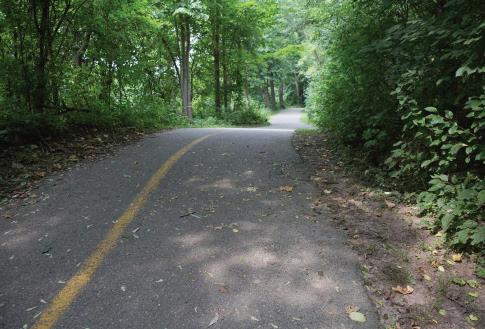
The Deshkan Ziibiing — also known as the Thames River or Antler River — is one of the most biodiverse rivers in Canada. It’s home to approximately 90 species of fish, 30 species of freshwater mussels and 30 species of reptiles and amphibians — some of which can be found almost nowhere else in Canada.

A recent e ort to foster student environmental stewardship was Western University’s first-ever Riverfest, organized by the O ce of Sustainability. It was a month-long series of on-campus events engaging students with the river, running from Sept. 6 to Sept. 27.
Sustainability coordinators and recent graduates of Western’s master of environment and sustainability program, Hira Jawaid and Madison Poultney, led the program. Poultney initially came up with the idea, teaming up with Jawaid and sustainability coordinator Jessica Cordes.
The events spanned from a “Bike to Campus Day” to an art exhibit to an Anishinaabe water walk led by Carol Hopkins and elder Irene Peters — a collaboration between 16 groups across campus and the community.
“The reason for getting more collaborators was that we wanted it to be a community event rather than just an o ce event, so Western as a whole celebrates the river they have,” says Jawaid.
Riverfest was also connected to Western’s 2018 Open Space Strategy, which aims “to accommodate future growth on campus, increase pedestrian
safety and integrate rapid transit through campus.”
One of the strategy’s 10 “big moves” is to reconnect the campus community to the river.
Brendan Samuels, a PhD student in biology and sustainability coordinator at Western’s Society of Graduate Students, says the natural features on Western’s campus and its surrounding areas are unique.
“I’ve been to a lot of university campuses and I’ve never seen one that has as much natural ecological richness right on its campus,” says Samuels, an environmentalist who has advocated for bird-friendly windows on campus. “We have become kind of disconnected from the land our campus is built on.”
Jawaid adds that Riverfest was inspired by The River Talks, a 2018 event led by then-London poet laureate Tom Cull. The event featured three days of programming involving various people whose work involves the river, such as Indigenous knowledge keepers, hydrologists and London watershed management at Museum London.
Cull is a professor in English and writing studies at Western, who also leads the Antler River Rally — a river clean-up volunteer group he started with his partner, Miriam Love.
“Little river cleanups here and there [are] important to do, and it’s important to the animals and ecosystems it a ects,” says Cull. “But this is about changing entire attitudes. This is about changing a mindset.”
The Antler River Rally partnered with Orientation Serves this past Orientation Week for the second year in a row. Around 100 students participated in a river clean-up on the last day of OWeek.

Cull says the event was important to him because orienting Western students goes beyond academics and building relationships with their peers.
“What we really wanted to emphasize with this event is [that] it’s also important to orient yourself
and build relationships with the river, plants, animals and great biodiversity that calls this campus home,” says Cull.

He emphasizes sewage, pollutants and garbage released into the river a ects other communities that share the water table.
London’s wastewater system dumps rainwater and raw sewage into the Deshkan Ziibiing to avoid basement flooding during heavy rains. In 2018, 266 million litres of raw sewage was released into the river and left to flow downstream, where several Indigenous communities reside.
There are eight Indigenous groups whose territories overlap with the watershed — one being the Oneida Nation of the Thames, located about 30 kilometres southwest of London. Oneida has been on a boil water advisory since the fall of 2019.
“Our responsibility [is] that the water leaving the city is cleaner for having passed through the city, not dirtier,” says Cull. “We’re part of the reason why Oneida can’t currently drink their water.”
Organizers of Riverfest hope to turn the series
of events into an annual occurrence. Samuels feels these events represent cultural changes happening on campus.
“This river has supported people living and working alongside it for millennia and that continues to be the case here,” says Samuels. “I will always think of Western as a university by the river — and I hope it does, too.”
CULTURE | P7
MICHAEL CONLEY GAZETTE Trails for walking, biking and wandering lead around campus, Aug. 24, 2018.
CAT TANG GAZETTE
The Deshkan Ziibing from University Drive Bridge, Oct. 12th, 2022.
COURTESY OF TOM CULL Orientation Serves river clean-up with the Antler River Rally.
Breadth requirements help students
REBECCA BARTKIW SENIOR VIDEO PRODUCER


Breadth requirements serve an important function — ensuring Western graduates are well-rounded and prepared for a world where subjects aren’t split up into categories A, B and C.
Western University requires almost all undergraduate students to take 1.0 credits from each category — with those groups largely consisting of courses from social science, arts and humanities and science, respectively.


For science students, breadth requirements force you to engage with new ideas and expand your thinking. While science, technology, engineering and math courses teach students important information about the world, it’s equally important to have an understanding of context, perspective and ethics that comes with an arts education.
Learning the how the world works in science only goes so far when not paired with the why you get in other courses.
It is also important that Western students, no matter the department, are scientifically literate.
As COVID-19 has proven, a basic understanding of research and data is crucial in both public and personal decision making.
Outside of university, we aren’t separated by faculties. While science and arts courses are separated into di erent categories, they do not stand alone. Instead, they can work to complement each other.
As a media, information and technoculture student, I spend many classes discussing problems about modern technology. If I’m studying everything wrong with the technology that people next door in the sciences are learning how to build and we never interact, how are we supposed to address these problems?
We need science to teach us how to solve our problems, but we also need the arts to teach us how not to create more of them.
Problems require holistic solutions and

well-rounded minds to solve them. Breadth requirements ensure Western graduates meet these criteria.
There are plenty of issues with how breadth requirements currently exist. Taking two science classes to fill my requirement is not going to make me a scientist. This is especially true when course labels like physics, biology and chemistry intimidate even the most curious arts students into taking whichever courses sound the closest to what they already know or have a reputation of being easy.
But this doesn’t mean breadth requirements are pointless. With some improvement, they can create more versatile students.
Western could develop new courses that highlight practical ways di erent subjects apply to their field of study. For instance, media studies students would benefit from a course breaking down the basics of scientific research, how to read a report and how to translate that to the average reader than by taking something they don’t see themselves ever thinking about again.
Alternatively, Western could integrate more cross-functional learning into its existing classes. They could teach computer science students about implicit biases when coding and show arts students how to decipher between good and bad data.
If we can cultivate an appreciation for di erent ways of thinking, students can make the most of classes outside of their required courses. In order for Western to produce the best students, we need to broaden our thinking, not narrow it.
Breadth requirements should not be mandatory
















 ELIZABETH HART SENIOR COPY EDITOR
ELIZABETH HART SENIOR COPY EDITOR

As a fourth-year student who’s had a fair share of school annoyances, it's time to talk about the worst part of course selection — breadth requirements.
Breadth requirements outline three groups — A, B and C — that most Western University students need to acquire 1.0 credit from each in order to receive their degree, regardless of their program or faculty. Group A covers social science and interdisciplinary studies, B arts and languages and C engineering, sciences and math.
Students pay so much money to come to university to focus on specific fields of interest and learn theoretical and practical skills for career opportunities. They shouldn’t be forced to take courses that have nothing to do with their futures.
These mandatory requirements take away opportunities for students to take courses of interest with their already-limited elective space.
Group C was the hardest to obtain for me. I struggled to find one 0.5 course, let alone two, that appealed to me as an arts student. I saw Western’s list of C group course recommendations on their website that presumably was there to help other arts and other non-science students, meaning I’m not the only student who struggled finding what to take.
I took a computer science and an environmental science course — both of which lowered my average and didn’t interest me. I chose them thinking they would be on the easier side, which they were, but still struggled to keep up and retain information in courses so di erent from my usual choices.
When students are forced to take courses that are not interesting to them, their marks will likely su er. Especially for students in a competitive program, they shouldn't need to fear their average plummeting over subjects they have no experience in, don’t care for and don’t plan on needing for their future.
Admittedly, there’s an advantage to having a well-rounded education. Students can learn different skills from di erent fields of study that are transferable to their preferred future path.
But high school already requires you to take certain subjects to gain these skills. We shouldn’t have to go through that again. If you’re at university to get a specific degree, you’re long past an experimental discovery period.
Having a diverse educational experience is great, but defeats the purpose of going into university with a specific interest in mind. For students that aren’t sure what they want to go into — sure, it’s helpful. But Western should make that opportunity for discovery optional and not force all students to follow that same structure.
If people want to take courses outside of their field of study for either fun or knowledge, they can. But don’t make it mandatory.
Anti-abortion club shouldn’t be USC-ratified
 SONIA PERSAUD NEWS EDITOR
SONIA PERSAUD NEWS EDITOR





Of the 233 clubs ratified by the University Students’ Council, only one’s stated purpose is an a ront to Canada’s Charter of Rights and Freedoms — the anti-abortion club Lifeline Western, whose stated goal is to “make abortion unthinkable on campus.”
And we, the students of Western University, are supporting them. Although the USC does not provide cash directly to clubs, ratified groups benefit from mandatory council ancillary fees. Clubs programming fees are used to provide a number of free and discounted services to USC ratified clubs, including Lifeline Western. This needs to change — now.
While Canada protects freedom of expression, that doesn’t mean we have to support that expression with our student fees when the views expressed are flat-out wrong.
Lifeline is one of a number of fringe groups — like anti-vaxxers or flat-Earthers — who advocate for an expressly anti-science position. Yet unlike groups like flat-Earthers, this position is particularly immoral. It has the potential to cause actual harm.
The consensus among the scientific community is that “on average, receiving an abortion [doesn’t] harm women’s mental or physical health, but being denied an abortion [results] in some negative financial and health outcomes.” Complications like


















high blood pressure, preeclampsia, postpartum depression and perineal tears are alarmingly common.
I’m a science student, and attend Western in part because I’m continuously impressed by the worldclass scientific research that takes place on campus. Western is also a national leader in the COVID-19 response, using public health evidence to guide decision-making even in the face of backlash. The presence of an anti-abortion club, therefore, is a blemish on Western’s otherwise strong pro-science record.
Abortion is a personal choice, period — and it’s a decision that should be made without pressure from anti-abortion groups like Lifeline. Organizations like Planned Parenthood, which don’t have a prescriptive agenda, are much more likely to provide better support.
Regardless of one’s views on the topic of abortion, we live in Canada, where the Supreme Court ruled in 1988 that a previous abortion law — which
only permitted abortions if life or health were at significant risk — violated the right to "life, liberty and security of the person" guaranteed under the Charter of Rights and Freedoms. Abortion is not criminalized whatsoever, and abortions are provided up to the 24th week of pregnancy in Ontario.
The legality of abortion is a settled case. While Lifeline doesn’t seem to be advocating to overturn this ruling or criminalize abortion, they don’t have to for their actions to be condemnable. If the USC were to ratify a conversion therapy club, even if the club wasn’t actively advocating for imprisoning LGBTQ2+ people, we still wouldn’t want it on campus. Its mere presence would be deplorable enough.

On other campuses across Canada, action has been taken to prevent this harmful ideology from being supported. The University of Ottawa, Carleton University and the University of British Columbia are among those who have de-ratified anti-abortion clubs on campus.
At UBC’s Okanagan campus, students at an anti-abortion club protested disbandment by suing their student union — which was subsequently struck down by the Supreme Court of British Columbia.


The USC has a responsibility to de-ratify Lifeline Western. And if de-ratifying clubs based on moral and scientific grounds isn’t currently within its power, that’s another change the USC absolutely needs to make.
Of course, it’s true there are other clubs on campus that advocate for ideologies that might not be necessarily “true” — like religious clubs — but these clubs focus on building community among members of a shared faith, not actively trying to convert
or shame members of the Western community.
De-ratifying Lifeline won’t stop its members from holding their anti-abortion views or advocating for them, but it will prevent them from being supported by student dollars while doing so.
As settled as the matter may seem, the rights of anyone with a uterus are still in question. We only need to look south to the recent re-criminalization of abortion in much of the United States for an example.
Only Lifeline Western, among hundreds of USC-ratified clubs, uses the privileges of ratification to advocate for a harmful position. Since the right to choose has been enshrined by Canada’s Charter of Rights and Freedoms, their mandate is also downright un-Canadian.
On Lifeline’s WesternLink clubs page, they’ve included a quote that ends “injustice that is made visible inevitably becomes intolerable.”
I hope that, having made the injustice of Lifeline’s ratification by the USC visible, it too will become intolerable


OPINIONS | P8
LIAM MCINNIS GAZETTE
Protestors outside Joanne and Peter Kenny Theatre, Jan. 10, 2020.
LIAM MCINNIS GAZETTE
Protestors outside Joanne and Peter Kenny Theatre, Jan. 10,
2020.
of
Op-Ed: Western needs to follow through addressing campus sexual violence
Following multiple reports of gender-based and sexual violence during Orientation Week in 2021, Western University came together to walk out of classes across campus to support survivors of GBSV and to demand a culture change.
With the backing of thousands of community members atop University College Hill, we sent a reverberating charge of electric teal energy across the nation. Our tidal march down campus pathways that sweltering Friday began a national conversation on safety and equity across post-secondary campuses.
In response to this student-driven movement, Western commissioned an independent review to investigate the events of Sept. 10 and Sept. 11 2021 and created the internal Action Committee on Gender-Based and Sexual Violence to produce a report of recommendations on how we can course-correct our institution’s culture.

Though our walkout last fall was one of the few student-organized demonstrations against gender-based and sexual violence at Western to date, there’s a longstanding cultural history of this violence in our institution and on campus.
As recently as 2018, the Student Voices on Sexual Violence Survey found that 71.6 per cent of Western students self-reported experiencing sexual harassment, with a further staggering 32 per cent of students experiencing sexual assault. These numbers were the highest among Ontario universities and demonstrate the urgency of this work.



















We at the Safe Campus Coalition — the organizing team of the Sept. 17, 2021 walkout — appreciate the work being done to date by campus leaders to make our campus a safer and more equitable place.
However, this work is far from over. It would be a disservice to our community and the survivors we hold in thoughtful regard to pretend that an inexhaustive list of recommendations should signal an end to our community’s cultural repair.
In this spirit, we have published a new list of calls to action for Western. We hope these calls to action and for transparency yield updated commitments from the university to prevent gender-based violence.
It is important to note many of the recommendations put forward by Western’s Action Committee on Gender-Based and Sexual Violence as well as the University Students’ Council’s 2022 Policy Paper on Anti-Sexual and Gender-Based Violence remain unfulfilled. Additionally, members of the Western community are often only apprised of new developments and initiatives at the time of their launch, despite calls for early and ongoing transparency.
Our calls to action propose transparency for our community on the implementation plan for unfulfilled recommendations — they also call for progress updates on recommendations that have been committed to but remain unfinished.
We must renew our community’s commitment to demand better from our university, political leaders and each other. It is our responsibility as a community to work towards the kind of safe campus that the people most vulnerable to this violence deserve.
We can’t make these vital changes alone. Our push for change last fall worked because we all showed up for each other and demanded better. That’s the kind of community solidarity we need to continue this work.
The Safe Campus Coalition will continue our work to educate and inform our campus community about consent, equity and gender-based violence. We hope you will lend us your support to keep this momentum for change going.
Ziyana Kotadia, chair of the Safe Campus Coalition and fifth-year Global Gender Studies student
Cafe Hopping: YOU Made It
 LAUREN MEDEIROS CULTURE EDITOR
LAUREN MEDEIROS CULTURE EDITOR
Ididn’t think I’d be starting my week drinking the blood of zombie victims, but here we are.
YOU Made It cafe —located on the corner of Richmond Street and York Street downtown — features a seasonal drink menu for October. One of their specials, the Matcha Zombie Frappe, is unique to say the least. The matcha powder gives the milkshake a light green colour, and raspberry syrup lines the cup, acting as the blood.
It’s unbelievably sweet, but I find myself finishing the whole thing before I even sip my other drink, the Harvest Flat White — a creamy, fallspiced delight, which front of house supervisor, Josi Hunter, recommends. Although I can’t taste the espresso it is made with, I enjoy the strong pumpkin flavour.
But YOU Made It is far more than a cafe with spooky-themed drinks.

It’s one of the five social enterprises run by Youth Opportunities Unlimited, an organization which helps train youth of all ages in London, Ont. to build the skills and confidence necessary to gain access to employment.

YOU Made It operates alongside catering and recycling services. The cafe also runs YOU Woodshop and Mushed by You. Proceeds from all purchases go directly to these other programs and services of Youth Opportunities Unlimited.
Hunter is also a youth mentor at the cafe, and says it’s unlike anywhere else she’s worked at.
“This place is absolutely incredible,” says Hunter. “When I get a youth that comes in [to work], they’re really timid and nervous. I can be that person that mentors them into gaining employment skills, but also social skills.”
YOU Made It is on the ground floor of a three story brick building downtown. There’s a strange
sense of comfort with its subway-like floor tiles and fluorescent lighting that gives the cafe a New York-style deli vibe.
There isn’t any music playing, but I enjoy the simple sound of the refrigerator humming, cutlery clanging together and employees trying to get through the morning rush.
The front of house at the cafe is focused on customer service and food production skills, as well as serving and busing tables. The kitchen does slower prep work and participates in Meals on Wheels for the community.
I decided to try the Avocado Smash, one of the eight breakfast options made fresh to order. The cafe also o ers a variety of lunches, including sandwiches, wraps and flatbreads, with soups and salads as sides.
The avocado is smashed on a slice of lightly toasted rye bread, topped with pickled peppers, cilantro and a sunny side up egg. When I take the first bite, I am hit with unexpected heat and realize there are sliced jalapenos hidden underneath the egg. The egg is perfectly crispy on the outside and runny on the inside — like it was cooked at home.

Although it is something I could have made myself, it’s only six dollars and started my day o right.
Hunter mentions that, although the business is serious, the team enjoys having fun with the youth they hire and try their best to get them out of their shell.
“[Youth] leave really happy and confident — that’s what makes my job rewarding,” says Hunter.



By enjoying a co ee — or a green monster milkshake — at YOU Made It, you’re not just getting your ca eine fix, you’re positively impacting the community.
Opinion: Why it’s important to volunteer around London
HANNAH ALPER OPINIONS EDITOR



Asstudents, it’s easy to romanticize the university experience and the full-fledged freedom of living on our own. But that can mask the complexity of the issues that native Londoners face and perhaps more importantly, how we can help.
While we might not be in London for decades or even more than a few years, we are still members of the London community. We eat here, go to school here, party here and live here. We need to treat London as if it is our home — because it is.
It’s no secret that for years, London has been in the grip of a huge housing crisis and as a result, a large homeless community remains. In late July, the London Homeless Coalition revealed that 27 people experiencing homelessness have died this year. In the neighbourhoods we now live in, social issues are drastically becoming more intense.
Fake Homecoming is a time of celebration, fun and nonstop partying. It is also a time where we make local Londoner’s lives much more dicult. In 2021, FOCO cost London taxpayers over $256,000.
Since we’re certainly not going to stop partying, we can start giving back and contributing to the solution more than we are a part of the problem.
We can and should work to see the perspectives of those experiencing homelessness, senior citizens and London residents overall and volunteer through many di erent opportunities that will better the London community.
The university o ers easy and tangible ways to get involved with community service in London. The Western Serves Network specifically acts to connect students with the broader London
community and works to raise awareness about community issues while o ering hands-on opportunities to help.
while



















I discovered the London Food Bank and try to volunteer there at least once a month. It’s just a few hours of not-so-heavy lifting, meeting people and sorting non-perishable items that go out to people who need them. While this seems like a small task, the impact of the action has the potential to go so far.
If you would rather volunteer closer to school, the USC Food Support Centre is a student-run food bank dedicated to combating food insecurity among students, and considers applications for volunteers.
Community service doesn’t just better the community you are serving, but yourself. Research proves that volunteering has been shown to increase self-esteem, self-confidence, healthy behaviours and overall mental health. So seriously, what’s not to love?
You might think the act of volunteering doesn’t make a di erence or there is only so much you can do as a student. But that mindset isn’t going to create the necessary change needed right here in our own community.
We all have the power, capacity and responsibility to leave the world a little bit better than when we found it. And when I say world, I’m talking about the world for sure. But I’m also talking about the place that matters to you — your home, your school, your community. Lucky for us, London is wrapped up in all those categories. Before we tackle the daunting issues of our time, it’s important to give right where we live.
We can find a powerful balance between enjoying the university experience we are lucky to have while recognizing our privilege and taking just a little bit of time to take action and volunteer where we live.
OPINIONS P9
LAUREN MEDEIROS GAZETTE Inside the YOU Made It cafe, located on the corner of Richmond Street and York Street, Oct. 17, 2022.
LAUREN MEDEIROS GAZETTE
The Avocado Smash at YOU Made It cafe, Oct. 17, 2022.
LAUREN MEDEIROS GAZETTE
Matcha Zombie Frappe at YOU Made It cafe, Oct. 17, 2022.
COMMUNITY To submit a community opinions article email opinions@westerngazette.ca
The art of rejection
firm, while not being hostile.
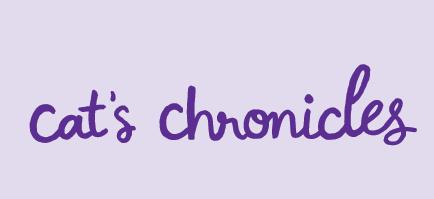
Several first dates later, I don’t feel I’ve gotten much out of the dating scene other than a free latte here and there. While I was initially excited by the prospect of “putting myself out there,” now I’m wondering if I should put myself back in there and just stay at home.
dates. I’ve been formally rejected twice: one



said he didn’t see us “long-term,” and another got into a relationship with someone else.
majority of the time, we both stop texting each other after the date.
Although I’m usually not interested in seeing them again either, I can’t pretend it doesn’t hurt my ego that I haven’t been on a second date yet. How can these men not propose after talking to me for an hour? I’m an extremely fun and easy-going person!
I’ve also recently traded in dates with pre-med and med students for Ivey students. As a result, I’ve found my recent escapades have felt less like co ee dates and more like co ee networking.



“What’s your definition of success?” asked one Ivey student, a question I struggled to answer as a 21-year-old woman, whose mom still buys a majority of her clothes.

While I haven’t found a ton of romantic success on these dates, I have learned a lot about corporate culture and the recruiting process.
I’ve only had to formally reject one person so far. He was a nice guy and there was nothing wrong with him, but I didn’t feel like seeing him again. When he texted me a few days after our first date asking to hang out again, I wasn’t sure what to say.
Like many of my text messages to my suitors, my response to him wasn’t written by me — it was written by a standing committee of my friends and roommates.
We drafted three potential text message responses and chose the best one to send — something that was friendly, but not too friendly, and





I’ve deleted Tinder and Bumble. I kept getting weird sexual messages on Tinder — one guy asked me if I wanted to “drink him,” and I, unfortunately, declined this generous o er. I deleted Bumble because I’m just too lazy to message a guy first.

















I’ve kept Hinge because it feels slightly more intentional, but I’m taking a break because scrolling through a constant carousel of men is desensitizing, and makes me feel like I’m trying to pick out a prized cow at a county fair.
This is di erent from what I imagined my undergraduate love life to look like. When I first entered university, I expected a handsome stranger with a love of feminist literature to see me reading under a tree and instantly fall in love with me.
Maybe I’ve just been reading under the wrong trees, but this has not happened to me yet. Until it does, I’ll continue going on dates with strangers and sipping on my free lattes.
Review: Theatre filled with laughter during Grand Ghosts
 DANIELLE PAUL CULTURE EDITOR
DANIELLE PAUL CULTURE EDITOR
London's Grand Ghosts has o cially hit the stage, and it promises to keep the audience laughing the entire time.
The play follows the disappearance of Ambrose Small — the real-life founder of London’s Grand Theatre. When I first heard about Grand Ghosts, I expected it would be creepy or eerie.
But it’s not scary at all — it's absolutely hilarious.
The musical surrounds a group of ghosts who are “acting” out the disappearance of Small, through a variety of scenes leading up to his mysterious departure.
The performers were talented singers and left me speechless. Besides having great singing, the show also featured miming and tap dancing — rarities in theatre nowadays.
Jesse Gervais plays Ambrose Small and audience members can tell he’s well-versed in the theatre. He’s been in the industry for 25 years and travelled from his home in Edmonton, Alb. to make his grand debut on Friday night — and what a debut it was.
Gervais stole the show with his engaging performance through his songs and dances, comedic stage
presence and natural chemistry with his co-leads.
From perfectly-timed jokes to exaggerated facial expressions, Gervais constantly had the audience laughing.
The production has a fairly complex plot, featuring two intersecting storylines, where performers are playing both characters in Small’s disappearance and the ghosts themselves. Jan Alexandra Smith played the ghost of the “singing diva,” while in the story of Small’s disappearance she played his wife, Theresa Small.
While this plot line could be confusing at certain points, the actors were excellent in showing which character they were portraying. In particular, Cyrus Lane — who portrays the ghost “acrobat,” Jack Doughty — stood out as he was able to sing seamlessly in both a Scottish and American accent, depending on his character.
Grand Ghosts is the perfect feel-good show for the spooky season and a true celebration of theatre for the London community.
Grand Ghosts will be running until Nov. 5 and tickets are available on the Grand Theatre’s website.
Alum Erica McKeen’s debut novel Tear gives ode to her childhood in London
 LAUREN MEDEIROS CULTURE EDITOR
LAUREN MEDEIROS CULTURE EDITOR
Erica McKeen had no idea the manuscript she was drafting for her creative writing thesis at Western would later become her first published novel.
The Western University alumna was born and raised in London, Ont., an upbringing she says inspired her debut novel, Tear
She completed her undergraduate in English and creative writing in 2017, and went on to pursue a master’s degree in the same department. It was writing professor Aaron Schneider who encouraged McKeen to turn her master’s thesis project into a full length, publishable book.
“Definitely from the beginning, I wanted [the book] to be bigger,” McKeen says. “I wanted it to be something other people might read.”
Tear blurs the lines between the real and the imagined, following protagonist Frances, a university student who struggles to separate her childhood memories from her dreams. Mckeen’s website calls the novel “a reclamation of female rage and horrifyingly deformed Bildungsroman.”
The alumna submitted the project to various publishers at the end of her degree. It was picked up by Canadian publisher, Invisible Publishing,
within six months of submission during fall 2020. COVID-19 caused delays, pushing back the publication date by a year.


McKeen was patient, spending her time publishing short stories in literary journals like PRISM International and The Dalhousie Review instead. Her novel was eventually published Sept. 6. The author travelled for a year prior to her undergrad, wanting to escape London. McKeen found her mental health issues resurfaced in more challenging ways, and decided to return to home after her travels.
“I had a wonderful childhood and it felt warm in a lot of ways,” says McKeen. “But as I got older, into my teenage and undergraduate years, London was always kind of gritty and cold. Attending Western for a while was a great experience academically for me, but [I soon learned] it doesn’t matter if you have a lot of support — the issues will still be there.”
The fiction writer now lives in Vancouver, B.C., and is working on another manuscript going out to editors now, which she hopes will be her second published work. Despite her new environment, she says she will never forget her roots.
“This gritty, dark feeling I have that probably came from my childhood in London — I think that’ll always follow me through my writing,” McKeen says.
CULTURE | P10
CAMILLE SEYRAT GAZETTE
PHOTO COURTESY OF ERICA M c KEEN
PHOTO COURTESY OF DAHLIA KATZ of
CAT TANG CULTURE EDITOR Ihave a confession to make: I am a serial first dater. I’ve been on five first dates and zero second
guy
A
Students petition to move first-year physics exam to watch FIFA World Cup final
The FIFA World Cup is almost here and fans from across the globe will tune in to watch the best of the best compete in the final for the trophy — except for students in a first-year physics class at Western.

Western University students in the first-year Physics for Engineering Students 1401A class will be writing their final exam on Dec. 18 at 10 a.m. — right at kick-o for the World Cup final.


But Rafi Mettias, a first-year Engineering student in the class, is trying to change that. Mettias has started a petition for his professor to move the exam so he and his classmates can watch the match.
“The World Cup is a huge thing all around the world and I think it deserves more than all of us missing it,” said Mettias. “It may sound stupid because it's just a soccer game at the end of the day, but it happens once every four years and a lot of people care about this.”
Mettias brushed o the exam schedule at first, but after joking around with a classmate, he decided to start the petition to see what would happen.
“I sent [the petition] to a few of my friends. I also thought about sending it to all the engineering students and see who actually cares. I started getting more and more signatures,” he said.
The petition has just over 300 signatures at the time of publication.
“In Canada, there aren't as many [soccer fans], so I didn't think anyone would actually care,” said Mettias.
Canada will be participating in this year’s World Cup for the first time since 1986 — where they lost every game of the opening stage and
JESSICA COUNTI GAZETTE

didn’t record a single goal. The Canadian team will be in Group F this year, competing against Belgium, Morocco and Croatia.
“Imagine [Canada] makes it to the final and we all miss it. That would be so annoying,” said Mettias.
The World Cup is usually held during the spring or summer, but moved this year since Qatar is the host and it would’ve otherwise been too hot for
athletes to compete.
Students will have to catch games in between classes and assignments when the tournament starts on Nov. 20. As for the final match, Mettias thinks the registrar’s o ce could have done more for student soccer fans.
“I feel like they should be aware of what it is and how big it is. It’s the most global sport in the world. They should have probably done their research,”
said Mettias.
The Gazette reached out for comment from the course’s professor, Silvia Mittler, but did not receive a response.
“I don’t know if the professor herself can really do anything about it,” said Mettias.
Western captures undefeated football season with win over Ottawa
RYAN GOODISON SPORTS EDITOR
The Mustangs football team completed their first undefeated season since 2019 with a 38–18 win over the Gee-Gees on Saturday afternoon.
But despite the positive result on the scoreboard, the game was marred by injuries.
As Western University tried a roll-out pass play to receiver Seth Robertson nine minutes into the game, quarterback Evan Hillock was hit on his blindside and fell hard — Robertson also went down after a tackle.

Robertson was back later in the game, but Hillock never returned. The second-year signal caller was seen warming up on the sidelines but did not go out for a snap during the second half. Hillock injured his left shoulder on the play.
“[Hillock] will be ok,” said Mustangs head coach Greg Marshall. “We have two weeks now. He wanted to go back in the second half, and I said 'no.'” Linebacker Max Nixon also came o the field with an apparent injury after his second sack of the game.
Second-string QB Jackson White came in for his earliest start of the season — the previous being a third-quarter start in a blowout Homecoming game against the University of Waterloo Warriors.
“We lost [Hillock] early in the game, and Jackson [White] comes in and plays great. He started to make some great throws once he got settled in,” said Marshall.
With little to no warm-up time, it was clear Western planned to rely on their running backs to lead them to victory. But this became doubtful as
Keon Edwards and Edouard Wanadi both got hurt on back-to-back plays in the second quarter. Luckily, both star running backs returned.
“I felt ready to go right away,” said White. “I’m always waiting for an opportunity. I never wish anything bad on Hillock, we are really good buddies. I was happy to step up and play well.”
Earlier in the game, the University of Ottawa defence remained stout against a diminished Mustangs o ence, shifting momentum after Hillock went down.
But White’s game improved as he went along, finishing the game with 196 yards through the air and two touchdown passes to Robertson and Savaughn Magnaye-Jones. He completed 66.7 per cent of his passes to push Western to an undefeated regular season.
“I think in that fourth and fifth drive, I just started to get more in rhythm, and that was kind of a turning point,” said White.
The Gee-Gees entered the fourth quarter down by just two scores, but the Mustangs quickly put the game out of reach with a field goal by Brian Garrity and a one-yard rushing touchdown from running back Troy Thompson.
Western’s defence was as great as ever, shutting out the Gee-Gees in both the first and third quarters and keeping them to only 251 yards of total o ence.
Ottawa running back J.P. Cimankinda struggled against the Mustangs defence, rushing for only 47 yards on 15 attempts.
Edwards and Wanadi both had impressive games again, combining for 238 yards on the ground and one touchdown. Edwards finished the Ontario University Athletics regular season with just under 1,000 rushing yards, while Wanadi fin
ished with 829.
“[Edwards] really carried us today. The [offensive line] up front played really well. But [Edwards] and our running backs today, they played a tough, physical game, and they were rock stars today,” said White.
The Mustangs have earned a first-round playo bye and won’t have to suit up again until the OUA semi-finals on Nov. 5. Western will also play the rest of their games at home, including potential
Yates Cup, Mitchell Bowl and Vanier Cup appearances in November.
“[The bye week’s] huge, I think everyone needs it for their body. We have a longer time to prepare as well — guys can get healthy,” said White. “We're gonna stay motivated, and it's gonna be a big week for us. So we'll see who we get and we'll come prepared.”
SPORTS | P11
RYAN GOODISON SPORTS EDITOR
PHOTO COURTESTY OF GREG KOLZ
Seth Robertson carries the ball upfield, Oct. 22, 2022.
















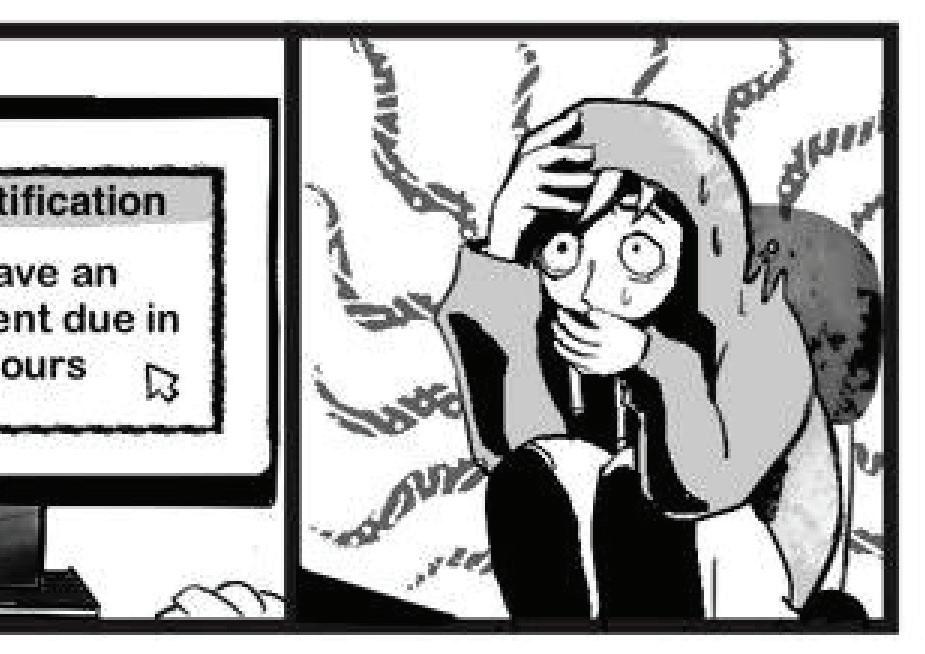







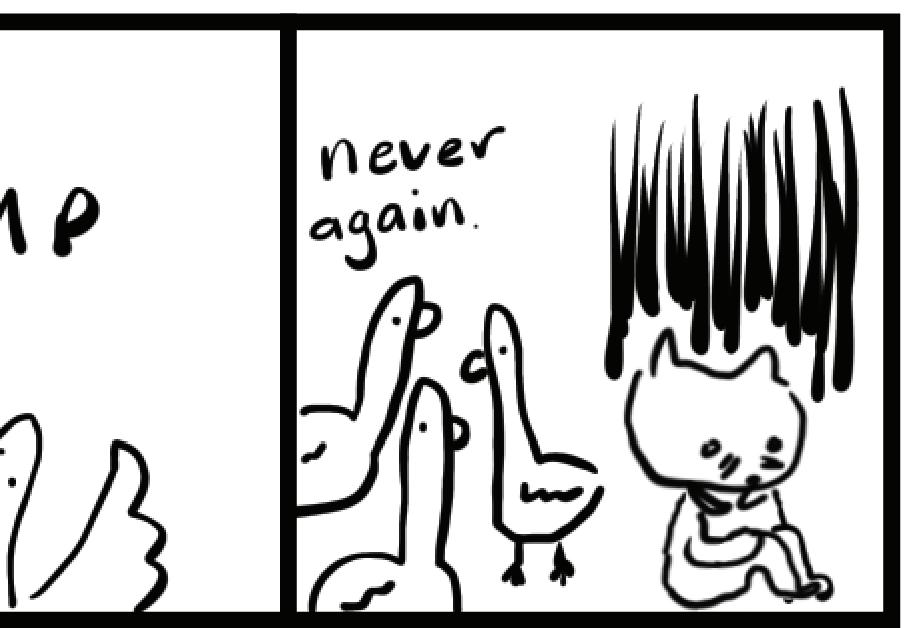
COMICS | P12
GREG
WEI GAZETTE
JI
YOU GAZETTE Think you can do better? Email your comics to comics@westerngazette.ca or come to UCC 263 and ask about volunteering for our Graphics section! JI YOU GAZETTE ANDY YANG GAZETTE AERO BOUNTY CANDYCORN CARAMILK CHEETOS COFFEECRISP GUMMY HERSHEY KITKAT LAYS PEZ ROCKETS SKITTLES SMARTIES SNICKERS SOURPATCH STARBURST TOOTSIE TWIX TWIZZLERS WORD SEARCH BANK I





 VERONICA MACLEAN NEWS INTERN SONIA PERSAUD NEWS EDITOR
VERONICA MACLEAN NEWS INTERN SONIA PERSAUD NEWS EDITOR













 SONIA PERSAUD NEWS EDITOR
SONIA PERSAUD NEWS EDITOR





























































 SONIA PERSAUD NEWS EDITOR
SONIA PERSAUD NEWS EDITOR






































 LAUREN MEDEIROS CULTURE EDITOR
LAUREN MEDEIROS CULTURE EDITOR






























 DANIELLE PAUL CULTURE EDITOR
DANIELLE PAUL CULTURE EDITOR
 LAUREN MEDEIROS CULTURE EDITOR
LAUREN MEDEIROS CULTURE EDITOR


























